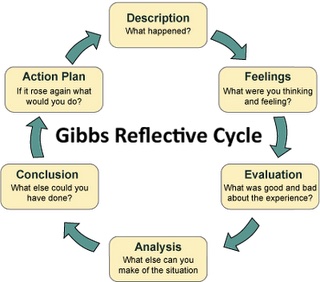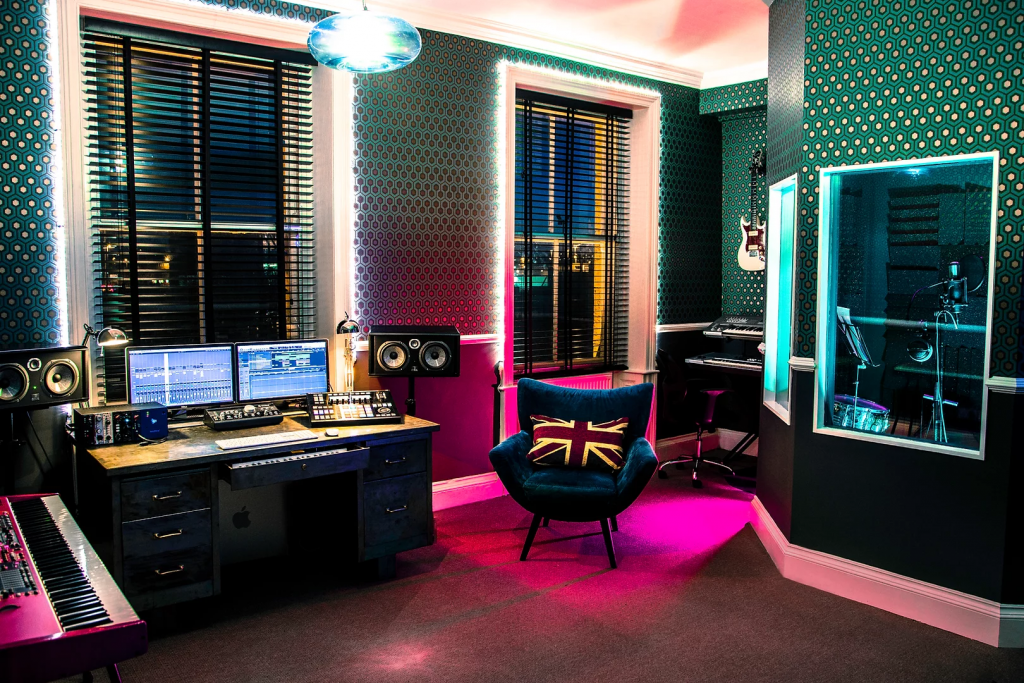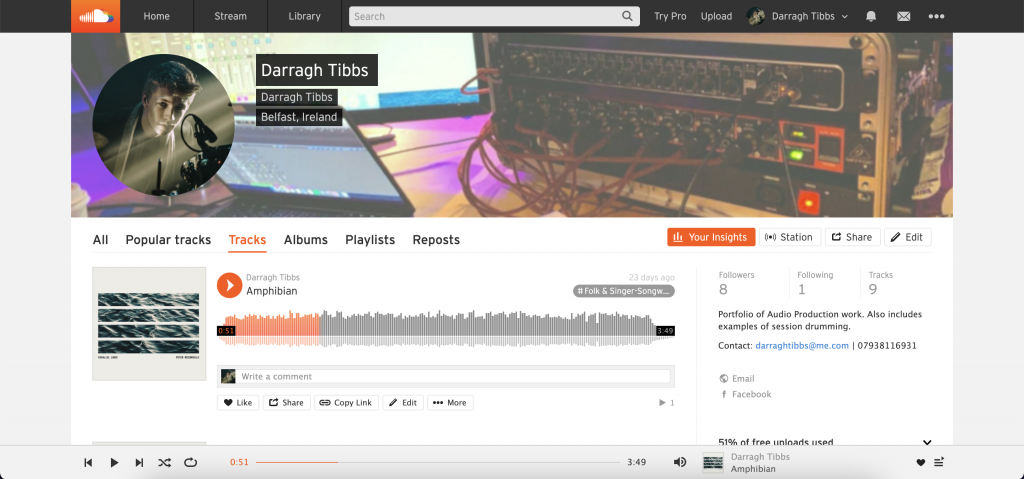A ‘Real’ Interview…
In preparing for my simulated interview, I found it difficult to relate this task to my experiences applying for work in music production. I have not experienced a formal interview, instead securing gigs has been done by presenting examples of my work and by informal conversations. I found the text Introducing the Creative Industries: From Theory to Practice model of “portfolio workers who combine short-term or part-time employment with freelance project-work” very relevant to my career ambitions [1]. I also found searching for listed jobs discouraging as there was a small pool of jobs in studio engineering/production… more accurately, there was one job. This task, then, appeared initially daunting. I have reflected on this experience using the Gibbs Reflective Model [2].

I interviewed for the position of Audio Engineer and Co-Producer at Black Lodge Studios in Leeds. This was the only formally listed job in recording studio engineering in the UK at the time. Beyond a client list and a reiteration of the job title, the job description only provided a few phrases to indicate to help me with my preparation: that “some skills at production [as well as engineering skills]” were required; that “experience [was] not necessary but skills essential…” including fluency in a specified DAW software; and they indicated the mixing console their studio is built around.
Initially, I found the lack of detail in the job listing frustrating, so I had to look beyond it to properly prepare. I reflected on topics which had been particularly important in the kinds of informal conversations/introductions I have had so far in my practice; focussing on my first meeting with my placement mentor and the kinds of meetings I hold with potential freelance clients. In both scenarios we focused on creative intentions, technical knowledge, and overall work ethic. Accordingly I created an interview structure that focuses around three key areas to include in my answers:
- Technical Resources and Competencies
I assembled a list of my technical competencies and compared this to the those required by the job description. Alongside the essential criteria, I tried to identify skills which, although not expressly listed in the description, showed desirable qualities. For example, the job description said “some skills at production” were desirable so during my simulated interview I touched on my instrumentalism, composition and arrangement experience as related to my “production” skillset.
This category also addresses specific pieces of studio equipment. Alongside the Neve Genesys console described in the listing I found other pieces of equipment in the studio on their website. In my interview, armed with a knowledge of the equipment used in this studio, I was able to detail my knowledge and experience with individual pieces of equipment as well as an understanding of the hybrid analogue/digital workflow employed by this studio.

- Ideological Approach
Much of the content in this category is based on discussions with my placement mentors about recording session etiquette and the inter-personal skills of music producing. In my interview answers I tried to talk about my philosophy on recording music and my passion for music, supported by technical information. This category is the most important to convey how I actually think and feel about music – technical knowledge can be taught after all.
During my interview I was asked how I would manage regularly working in a wide variety of genres. I was able to discuss what I feel the fundamentals of recording music are, about the importance of creating a set of shared musical objectives with the artists before starting any session to ensure the artist gets a bespoke sound and experience. Zager called this the need to “maintain the essence” of an artist when producing them [3]. I think the feedback I received reflects positively on how I incorporated this category into my answers:
“… Giving a high [level of] detail to their answers and showed their passion for music production and creation.”
- Work Experience and Portfolio
This is perhaps the simplest of the three categories covered in my interview answers. It simply means ensuring that I had either anecdotal evidence of my experiences or was able to provide the interviewers with actual examples of my work to support the discussions of the previous two categories. Before this interview I ensured my professional portfolio on Soundcloud was up to date with my best work. Gem Barton’s text Don’t Get A Job.. Make A Job underlines the importance of portfolio in creative job creation saying “Clients and employees want to know that you can do the job and do it well, and have examples and proof to show them” [4]. I took advice from my placement mentor when choosing Soundcloud as a platform and on how to select the best work to showcase. The feedback shows I was successful in evidencing my answers:
“Candidate provided very detailed explanation of their skills and abilities and where they’ve applied them in the past, while also detailing their enthusiasm for the content of the position.”

I was very pleased with the piece of feedback above and I think broadly I succeeded in using my categories to give clear and detailed answers. The same piece of feedback also referenced use of the STAR system for structuring answers but said I “didn’t appear to be overthinking each of the answers.” I think this is likely because of the way I supplemented the STAR method with the three categories specific to music production interviewing.
| Star Technique | My Categories |
| Situation | Technical Resources and Competencies |
| Task | Technical Resources and Competencies; Ideological Approach |
| Action | Technical Resources and Competencies; Ideological Approach |
| Result |
Although I felt the simulated interview did not necessarily reflect my experience of job-seeking in music production so far, I feel this task was useful in helping me reflect on my experiences to date and on my current skillset in a structured way. This was a good way to clarify my thoughts and my ‘pitch’ for myself when applying for freelance gigs.
By a happy coincidence, I had an interview to begin a freelance relationship with a recording studio in Belfast on the same day as we did the simulated interviews. This interview was successful and I was offered a part-share in the studio as an in-house engineer. I feel this interview went particularly well because I could use the three categories I defined for the simulated interview task to structure my responses and paint myself and my experience in the best light for these potential employers.
[1] Rosamund Davies, and Gauti Sigthorsson. Introducing the Creative Industries : From Theory to Practice. SAGE Publications Ltd, 2013. EBSCOhost, search-ebscohost-com.queens.ezp1.qub.ac.uk/login.aspx?direct=true&db=nlebk&AN=2730207&site=eds-live&scope=site
[2] Gibbs, Graham. Learning By Doing: A Guide To Teaching And Learning Methods. Oxford Further Education Unit, 1988.
[3] Zager, Michael. Music Production : For Producers, Composers, Arrangers, and Students, Scarecrow Press, 2011. ProQuest Ebook Central, https://ebookcentral.proquest.com/lib/qub/detail.action?docID=795622
[4] Barton, Gem. Don’t Get a Job…Make a Job. Laurence King Publishing, 2016. EBSCOhost, search-ebscohost-com.queens.ezp1.qub.ac.uk/login.aspx?direct=true&db=nlebk&AN=1234840&site=eds-live&scope=site
You May Also Like

When the BBC thinks you live in the Atlantic – My Simulated Interview
17 February 2022
So You Want To Be A Teacher?
17 February 2022
